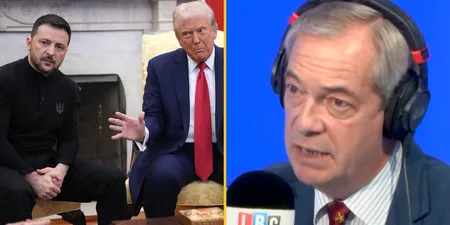On the opening day of the 2008/09 season, Gabriel Agbonlahor arrived like he always did, in a dizzying, muscular rush
He scored a seven-minute hat-trick against Manchester City, then still a juggernaut in waiting, a semi-exotic mess of players; Valeri Bojinov injured in the warm-up, Ched Evans starting up front.
By technical definition, it was perfect: right-foot, head, left-foot. In reality, less so – the right-foot volley an unorthodox side foot, the header a stooping, fortunate-looking glance. The third, however, was all that Agbonlahor was as a player, forever existing a fraction past the shoulder of the last man before recoiling back onside and unloading like a spring or a starting rifle, firing away from everything else like he’d been shot out of a human-sized pinball lever.
Agbonlahor opened up his body and finished high into the far corner like an inverted Brummie Thierry Henry and ran to the fans, in one direction then back in the other, furiously pointing at the badge on his chest.
Seeing it as a young boy from the Lower Holte End, only a few metres away from him when he finally stopped running, it had the same effect that standing up too quickly from a sitting position does. That giddy, debilitating warmth that comes, then goes, and always leaves you wondering exactly what the fuck just happened. Agbonlahor ‘69, ‘74, ‘76. Down and up and down and up and down and back up again.
He would score only eight more times in 35 appearances in the league that season but ‘Gabby’ had his best Premier League scoring return the year after with 13, the last time he would reach double figures after two straight campaigns with 11 goals. Despite the underwhelming statistics, he remains Aston Villa’s all-time leading Premier League goalscorer with 73 in 325 appearances.
And now he has retired at 32 years of age.
Officially. He hadn’t played in over a year anyway but apparently nobody had noticed.
Agbonlahor’s retirement came as something of a surprise to those that, understandably, hadn’t been following the late-period decline of his career. Reportedly overweight and visibly sluggish, he faded into obscurity along with his surroundings, a shadow swallowed in the eclipse, the physical embodiment of the club he had spent his entire career playing for, from the thrilling counter-attack revival under Martin O’Neill to the bloated, identity-less, financially reckless form that belatedly caused yet another historic club to sink into the Championship. Villa Park’s own Elvis in Graceland.
Of course, he did stay with the team through thick and thin; something about loyalty, something about being a local boy. It’s likely more down to the fact that his substantial wages meant he had no reason to leave, even after it became clear he was well behind in the pecking order to the likes of Rudy Gestede and Ross McCormack.
He was comfortable not playing and as a result refused to follow the middling journeyman striker path already set out for him: an unsuccessful loan to Trabzonspor, Melbourne Victory on a free, a final, despairing half season for Pune City in the Indian Super League, four appearances one goal, a deep and eternal nothingness.
His last two goals, a 68th minute winner after coming on as a 59th minute substitute against Birmingham City – practically his first touch of the ball – and Villa’s opening goal of the 17/18 season in a game he miraculously started thanks to an injury crisis, were to be his last meaningful acts for the club. Those two instances of him abruptly popping his head up out of the abyss, the quintessential Premier League Years pace merchant in the Sarlacc’s pit, seemed to detract rather than add to his legacy as a club legend.
After all, where had he been? It seemed as though he would always disappear for weeks on end and then come back for a game or two, scuff in an unconvincing finish, proclaim how much he loved the club and evaporate once again into the all-consuming mist of the weights room, substitute’s bench, half-hour-appearances-for-the-reserve-team-to-regain-a-fitness-that-everyone-had-already-seemed-to-realise-was-never-coming-back cycle.
The fact that the record goalscorer of a once ever-present Premier League team is retiring at the age of 32 without sliding down the leagues first should be shocking. With Agbonlahor, somehow it isn’t.
Maybe, upon reflection, it’s fitting that there was no resistance or drag at the end. It was a relatively smooth sprint towards retirement; there was no half-hearted stint in the MLS or a tumbling down of the football league ladder until he neared 40, gradually scoring less and less and less until he was scoring none at all. Agbonlahor’s career started sped up, a fuzzy VHS on fast-forward, catapulting from three starts and one goal in his debut season to 37 and nine in his next. He made his debut at 19, reached the senior England setup by 22, his prime by 23 and then that was pretty much it bar a brief resurgence feeding off Christian Benteke’s colossal first season in England. He was past it by 29, unofficially retired by 31 and officially retired on Wednesday.
He will go down in the club’s history as a record goalscorer even though he won’t feel like one. An all-time great, who wasn’t. Who both on paper and in reality had long since ceased to even be average, let alone quite good, let alone great.
He is, however, a cult hero to Villa supporters thanks to all the goals against Birmingham over the years and all the times he brought the crowd to their feet with those lightspeed, bowling ball down a ski slope runs, in behind the backlines to catch through-balls that didn’t look like they could be caught. The goals didn’t matter as much as the feeling did.
It makes sense that his career arc stayed true to form and true to self, a blur with imperceptible edges pulling away and suddenly vanishing into the distance. He was there and then he was gone again.











































